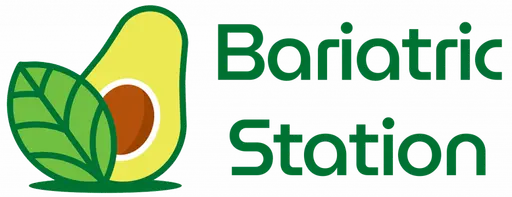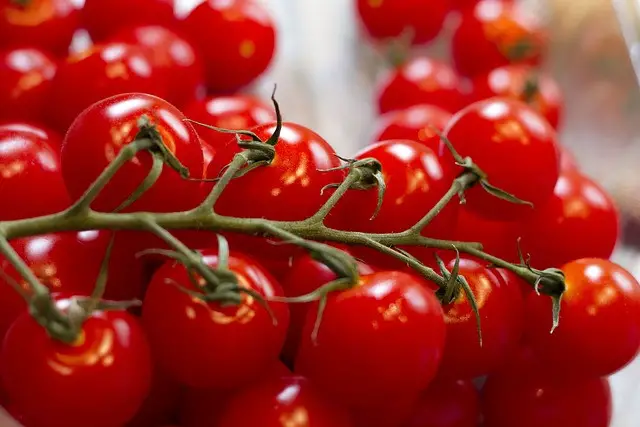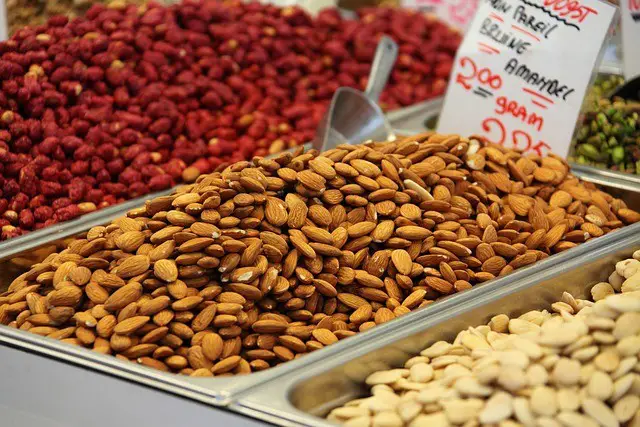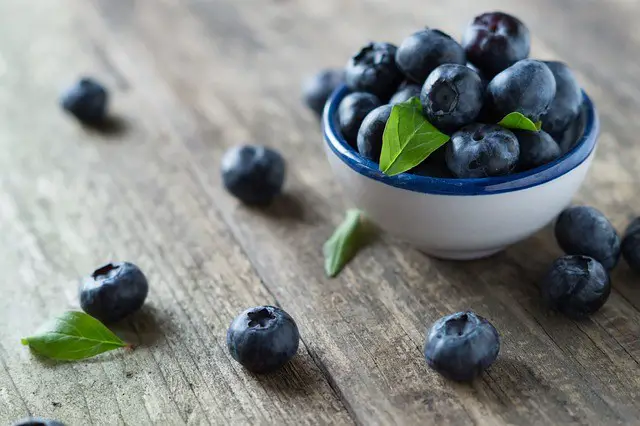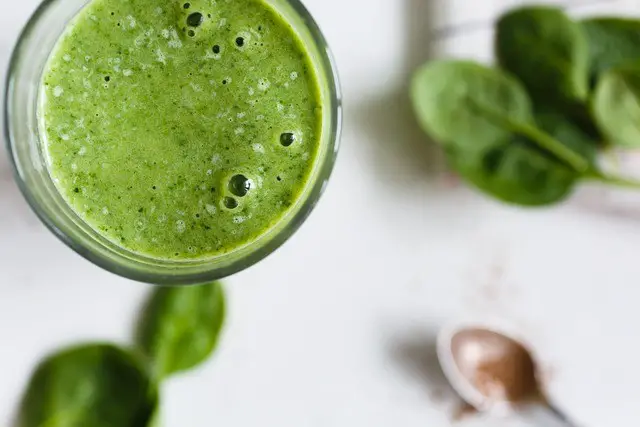Vegetables are a significant addition to your keto diet. Keto foods are chosen because they are low carb, providing inadequate glucose for the body, which forces the body into ketosis. Knowing the type of vegetables to eat on keto is important to ensure you stay within your carbohydrate limit.
One of the vegetables allowed on the keto diet is tomatoes. Fun fact, tomatoes are a fruit rather than a vegetable, since they are seed-bearing. There are different varieties of tomatoes, all considered keto-friendly when raw. However, not all tomato products are keto. We will be focusing on one variety, grape tomatoes, and their role in nutrition.
By the end of this article, you will know the nutritional value in grape tomatoes, why you should add them to your daily diet, and their differences from other tomato varieties. Let’s dive into it!
Grape Tomatoes Overview
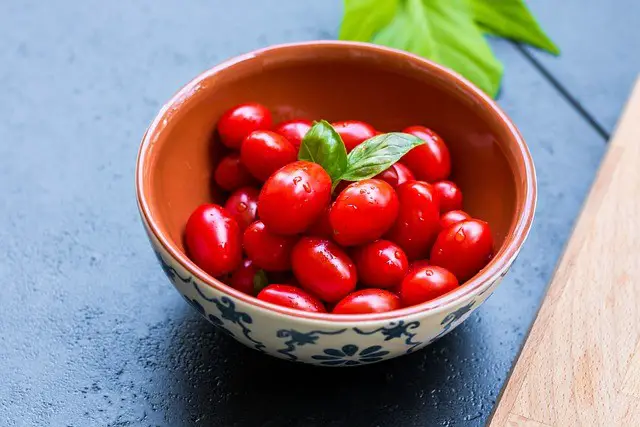
These types of tomatoes originated from South Asia, and they differ from other tomato varieties in size. The size ranges from being as small as a penny to the size of a golf ball. People may have come across different color varieties of grape tomatoes from red, green, orange, and yellow grape tomatoes.
Grape tomatoes have a rich color and a burst of flavor that make them a must-have in your daily diet. What is the daily value of nutrients in grape tomatoes? Daily value refers to how much a nutrient you should eat in a day based on a diet that gives you 2,000 calories based on general nutrition advice.
Nutritional Value in Grape Tomatoes
According to the USDA, one cup serving of raw grape tomatoes contains:
- Energy: 47.1 kcal
- Water: 141 g
- Total carbs: 8.38 g
- Dietary fiber: 3.19 g
- Net carbs: 5.19 g
- Nitrogen: 0.198 g
- Protein: 1.26 g
- Total fat: 0.958 g
- Calcium: 16.7 mg
- Potassium: 395 mg
- Magnesium: 18.1 mg
- Manganese: 0.184 mg
- Copper: 0.088 mg
- Phosphorus: 42.6 mg
- Iron: 0.502 mg
- Zinc: 0.304 mg
- Sodium: 9.12 mg
- Vitamin C, total ascorbic acid: 41.3 mg
- Choline, total: 14.9 mg
- Choline, free: 12.2 mg
- Choline, from phosphocholine: 0.912 mg
- Choline, from phosphotidyl choline: 1.82 mg
- Choline, from sphingomyelin: 0 µg
- Vitamin A, RAE: 0 µg
- Cis beta carotene: 74.5 µg
- Trans beta carotene: 597 µg
- Lycopene: 6,230 µg
- cis lycopene: 842 µg
- Lutein: 144 µg
- Zeaxanthin: 13.7 µg
- Vitamin E (alpha-tocopherol): 1.49 mg
- Tocopherol, beta: 0.03 mg
- Tocopherol, gamma: 1.06 mg
- Tocopherol, delta: 0.182 mg
- Vitamin K (phylloquinone): 6.38 µg
An ounce serving of grape tomatoes contains 3 g of total carbohydrates, 1 g of dietary fiber, 2 g of net carbs, and 1 g of protein. Grape tomatoes are also fat-free, meaning they have no cholesterol!
The skin of grape tomatoes is high in fiber, they can give you up to 7% of the daily value. They are also low in calories, in addition to their high fiber content, which makes them good for weight loss. Grape tomatoes do not contain any sugars, which means they will not spike your blood sugar. The carbohydrate content of grape tomatoes can help you meet 10% to 25% of the recommended carb intake on low-carb diets.
What Health Benefits Does Grape Tomatoes Have?
Grape tomatoes have numerous nutrition benefits including:
Rich in Vitamins and Minerals
Grape tomatoes like cherry tomatoes are rich in minerals and vitamins that are essential for the overall health of the body. They contain vitamins C, A, E, and B vitamins. Vitamin C is an essential antioxidant required to reduce inflammation in the body. It also contains vitamin K1 or phylloquinone which plays a significant role in blood clotting and bone health.
Grape tomatoes contain 5% of the recommended daily value of potassium, manganese, vitamins C, A, and E, thiamin, and riboflavin. The nutrients found in high amounts in grape tomatoes and their percentage of the recommended daily value in 100 g serving include:
- Vitamin E: 65.33%
- Vitamin A: 50%
- Vitamin C: 30.22%
- Potassium: 5.53%
- Phosphorus: 4%
Vitamins and minerals in grape tomatoes are good for lowering heart disease and the risk of developing cancer. Vitamins are also good for increasing the absorption of other minerals, improving your immune system, and building bones and muscles.
Antioxidant-rich Food
Cherry tomatoes and grape tomatoes are rich in antioxidants that lower oxidative stress, protecting the body from chronic and inflammatory diseases like cancer and diabetes. From the nutritional value in grape tomatoes information, you can see that there is a component in this variety of tomatoes that can be beneficial to your body. They include:
Carotenoids
Lycopene, responsible for tomatoes’ red hue, has been associated with a reduced risk of developing chronic diseases. Cis lycopene is an antioxidant that can protect your DNA cells from damage. Research has also shown that lycopene can reduce the risk of developing cancer.
Grape tomatoes also contain beta carotenes which can be converted to vitamin A by your body. Trans beta carotene and cis beta carotene can also protect against disease pathophysiology. To lower your risk of cancer and heart disease, consider this food an important addition to your keto foods.
Lutein and Zeaxanthin
Other antioxidants in grape tomatoes are lutein and zeaxanthin. These are best known for their anti-inflammatory properties that protect your brain and promote eye vision.
Promote Heart Health

Grape tomatoes contain lycopene which assists in the breakdown of cholesterol and fat. A study was done to investigate the effects of dietary intake of lycopene- and lutein-rich vegetables on metabolic syndrome in obese men. The results showed that people consuming a daily diet high in lutein and lycopene experienced a reduction in visceral body fat.
Low lycopene levels have been associated with a high risk of heart problems like stroke and heart attack. The high serum concentration of lycopene has been shown to lower the risk of ischemic stroke and any other stroke by 59% and 55% respectively.
Experts are giving general nutrition advice to the elderly to consume potassium-rich foods to help lower high blood pressure. Cherry tomatoes and grape tomatoes are rich in potassium and have a low level of sodium which can be beneficial for blood pressure control. Replace sodium-rich foods with potassium-rich ones to lower your chances of developing high blood pressure. Hypertension is a risk factor for cardiovascular disease.
Promote Skin Health

Aging can have negative effects on your skin like loss of elasticity, dry skin, and skin conditions. Polyphenols, carotenoids, and antioxidants can protect your skin from harmful UV rays. This is achieved through moisturization and signaling pathway regulation by these compounds.
The two main varieties of tomatoes, cherry tomatoes, and grape tomatoes contain beta-carotene and lycopene which are essential for promoting skin health. Most of the lycopene in tomatoes is found on the skin, so avoid peeling your grape tomatoes when you want to prepare food, to enjoy their full benefits.
Weight Loss

The Food and Drug Administration recommends a daily fiber intake of 25 g for women and 38 g for men. The general nutrition advice is to consume 2,000 calories, and you need to meet the daily value (how much a nutrient contributes to your daily diet).
Eating 100 g of grape tomatoes will help you meet 8.4% of your recommended daily intake of fiber. This, plus its being low in carbohydrates and calories, makes it perfect for losing weight.
Grape tomatoes are rich in choline, a B vitamin that is essential to your nutrition. The nutritional benefits of choline include cholesterol and fat transport and energy metabolism. Studies have shown that choline supplementation can reduce body mass without any negative effects on the body. Raw and cooked grape tomatoes are high in phosphotidyl choline which can lead to weight loss.
On a keto diet, you will have to eat your tomatoes with high-fat foods to meet your recommended fat intake. Eating your tomatoes with protein-rich foods like chicken will provide you with moderate protein and healthy fats for weight loss. It will also add a good kind of cholesterol, a component of the cell membrane.
Consider pouring olive oil into your raw vegetable salad to increase the fat content of your food, without increasing carbs, allowing you to stay in ketosis for fat oxidation.
Risks of Eating Grape Tomatoes
Although they are low in carbohydrates and calories, some people may need to be careful with the serving of grape tomatoes they consume, whether raw or cooked.
Allergies
Tomato allergies, though uncommon, are possible. Individuals with a grass pollen allergy are at a higher risk of being allergic to tomatoes, whether cherry tomatoes or grape tomatoes. Some of the reactions you have to consume raw tomatoes may be due to intolerance to the acidity of tomatoes.
The symptoms of grape tomato allergies include hives, itching, burning, and swelling of the eyes and tongue.
Acid Reflux
Individuals with gastroesophageal reflux (GERD) caused by chronic acid reflux can be worsened by consuming acidic foods. Raw cherry tomatoes and grape tomatoes are acidic which means you should avoid them or reduce their intake.
May Contain Bacteria
Raw tomatoes, like any fresh produce, may contain Salmonella bacteria which can cause food poisoning. Individuals with compromised immunity are at a higher risk of infection from consuming raw vegetables.
Ensure you rinse and clean your fresh produce before consuming them to lower the risks of foodborne infections.
How to Incorporate Grape Tomatoes into Your Daily Diet
You can add raw grape tomatoes into:
- Salads
- Veggie wraps
- As a yogurt topping
- As a cheese topping
For cooked tomatoes, add them to your:
- Chicken and fish dishes
- Curries
- Keto ketchup and tomato sauce
- Soups
- Low-carb zucchini or cucumber noodles
Do Grape Tomatoes Have the Same Nutritional Value as Regular Tomatoes?
The nutritional value of grape tomatoes is similar to all the other varieties of tomatoes, whether it is regular tomatoes or cherry tomatoes. The nutritional benefits of cherries are similar to those of regular and grape tomatoes.
The difference comes in taste and size. Grape tomatoes have a perfect acid-to-sugar ratio for a sweet balance in taste. It is meaty and crunchy. They are softer in texture and have thicker skin than regular tomatoes. The regular ones are less sweet and juicier compared to the grape tomatoes. Grape tomatoes are smaller than the regular varieties.
What are the Healthiest Tomatoes to Eat?
Orange tomatoes are considered the healthiest tomatoes due to the amounts of nutrients they contain. They are high in beta-carotene, providing the largest boost of vitamin A when consumed.
It is also high in lycopene antioxidants which reduce the risks of cardiovascular disease. What makes it stand out is, its form of lycopene is easily absorbed by the body compared to that in cherry tomatoes and other varieties.
Are Grape Tomatoes Good for Diabetics?
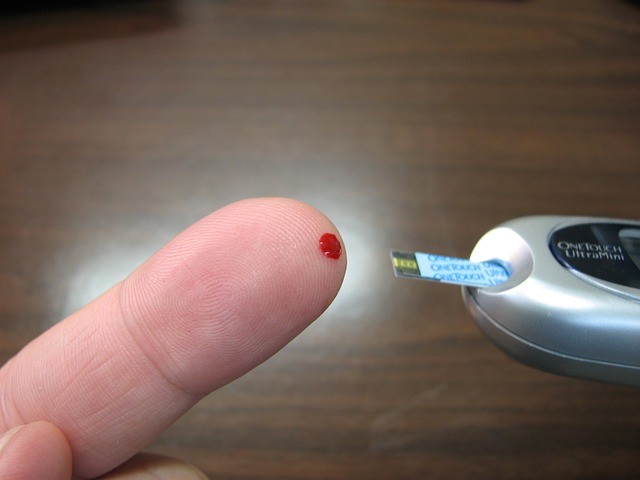
Grape tomatoes are low in calories, and carbs and do not contain any sugar. The glycemic index of fresh tomatoes (whether cherry tomatoes or grape tomatoes) is 30 and the glycemic load is 1.1, which classifies them as a low-carb food. This means that eating grape tomatoes will not affect your blood sugar.
Grape tomatoes also contain nutrients that are essential in blood sugar regulation. They are high in fiber which slows down digestion and absorption of glucose into the bloodstream. It also promotes satiety and reduces hunger which lowers food intake and stabilizes your blood glucose.
Variety is key, eat different types of tomatoes, from cherry tomatoes to regular ones to enjoy the benefits all tomatoes have to offer!
Bottom Line
The nutritional value in grape tomatoes shows that it is a food that is low in carbs and a must-add to your keto recipes. When you take a look at how much a nutrient in a food serving contributes to your diet, you will notice that most of the vitamins and minerals in grape tomatoes can help you meet your micronutrient recommended intake per day.
The nutritional value in grape tomatoes is the same as that of cherry tomatoes and other varieties, so you can mix them up throughout the day. The difference in tomatoes is in taste and size, with grape tomatoes being the smallest in size. Diabetics can enjoy grape tomatoes too!
How do you incorporate grape tomatoes into your diet? Which type of tomato is your favorite? Drop your favorite recipe that uses grape tomatoes as the star ingredient down in the comments below!
